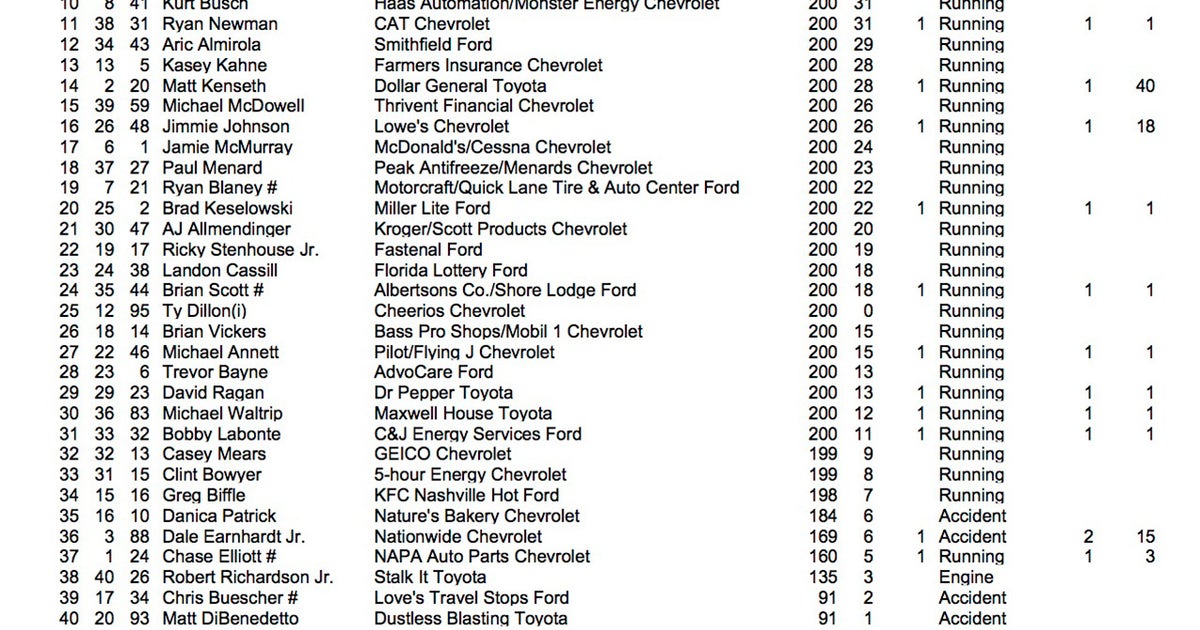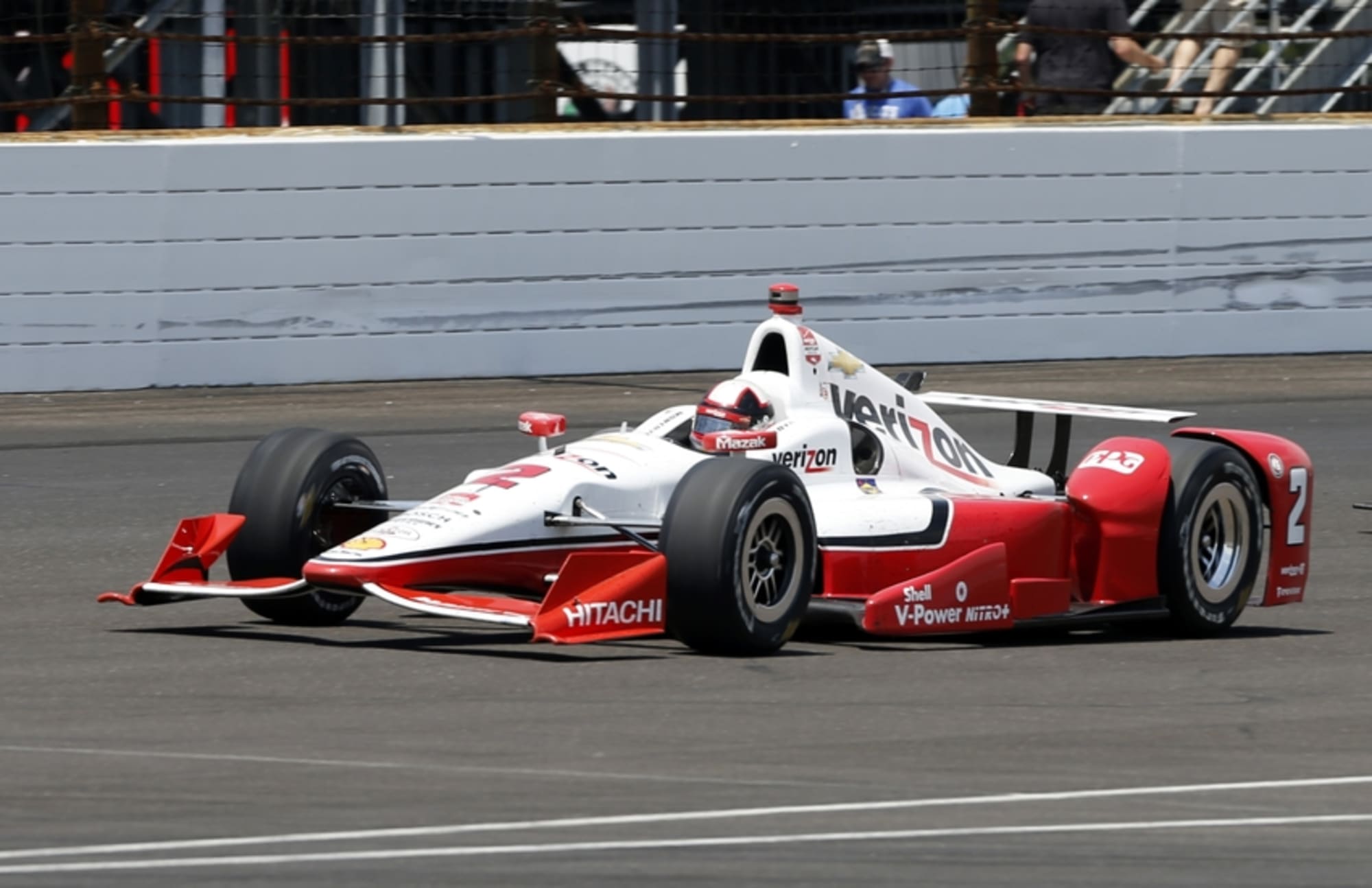Indianapolis 500 Finishing Order History

Indianapolis 500 finishing order – The Indianapolis 500 is one of the most prestigious and historic races in the world. The first race was held in 1911, and it has been run every year since then, except for during World War I and World War II. The race is held on a 2.5-mile oval track at the Indianapolis Motor Speedway in Indianapolis, Indiana. The race is 500 miles long, and it is typically completed in about three hours.
The Indianapolis 500 is one of the most prestigious races in the world, and the finishing order is always closely watched. The race starts with a rolling start, where the cars line up in order of their qualifying times. The cars then race for 500 miles, and the first car to cross the finish line is the winner.
To learn more about the start of the Indianapolis 500, click here. The finishing order of the Indianapolis 500 is often determined by a combination of factors, including the car’s speed, the driver’s skill, and the team’s strategy.
The Indianapolis 500 has been won by some of the greatest drivers in history, including A.J. Foyt, Rick Mears, and Helio Castroneves. The race has also been the site of some of the most dramatic finishes in racing history. In 1973, Gordon Johncock won the race by a margin of just 0.043 seconds, the closest finish in the history of the race.
For the Indianapolis 500, the finishing order is a highly anticipated event. Each year, the race attracts a global audience eager to witness the culmination of months of preparation and intense competition. But before the checkered flag waves, the question on everyone’s mind is: who’s winning the Indianapolis 500?
To stay updated on the latest standings, visit who’s winning the indianapolis 500 for real-time updates and expert analysis. Once the race concludes, the finishing order will be available on the official Indianapolis 500 website, providing fans with a definitive account of the thrilling spectacle they’ve just witnessed.
Winning Strategies and Car Performance, Indianapolis 500 finishing order
The Indianapolis 500 is a race of attrition. The cars are pushed to the limit, and many of them do not finish the race. The winning strategy is typically to stay out of trouble and to conserve fuel. The cars that are able to do this are typically the ones that finish the race in the top positions.
The performance of the cars has changed dramatically over the years. In the early days of the race, the cars were much slower and less powerful than they are today. The cars today are capable of speeds of over 230 miles per hour. The evolution of the cars has been driven by the desire for speed and the need for safety.
The Indianapolis 500 is one of the most prestigious races in the world, and the finishing order is always a closely watched event. To stay up-to-date on the latest news and results, check out our article on who’s winning the Indianapolis 500.
We’ll keep you updated on the latest developments, so you can be sure to catch all the action.
Technological Advancements and Rule Changes
Technological advancements have played a major role in the evolution of the Indianapolis 500. The cars today are much safer and more efficient than they were in the past. The use of new materials and technologies has allowed the cars to go faster and to handle better.
The Indianapolis 500 is one of the most prestigious races in the world, and the finishing order is always closely watched. This year’s race is no different, with several drivers in contention for the win. To stay up-to-date on the latest news and standings, check out who’s leading the indianapolis 500.
The race is sure to be exciting, so don’t miss out on the action.
Rule changes have also had a significant impact on the Indianapolis 500. The rules have been changed over the years to improve safety and to make the race more competitive. The most significant rule change in recent years was the introduction of the Dallara DW12 chassis in 2012. The DW12 chassis is a safer and more aerodynamic car than the previous chassis. It has helped to improve the safety of the race and to make the race more competitive.
Factors Influencing the Indianapolis 500 Finishing Order
The Indianapolis 500 is one of the most prestigious and challenging races in the world. A variety of factors can influence the finishing order of this iconic event, including driver skill and experience, car performance and reliability, track conditions and weather, and pit strategy and tire management.
Driver Skill and Experience
Driver skill and experience play a major role in determining the outcome of the Indianapolis 500. Drivers who are more skilled and experienced are more likely to make quick decisions, avoid mistakes, and handle the pressure of the race. They are also more likely to be able to get the most out of their cars and make the most of their pit stops.
Car Performance and Reliability
The performance and reliability of the car is another important factor that can influence the finishing order of the Indianapolis 500. Cars that are faster and more reliable are more likely to finish near the front of the pack. Drivers who are able to get the most out of their cars and avoid mechanical problems are more likely to be successful.
Track Conditions and Weather
The track conditions and weather can also play a role in determining the outcome of the Indianapolis 500. Drivers who are able to adapt to changing track conditions and weather are more likely to be successful. For example, drivers who are able to handle wet or slippery track conditions are more likely to finish near the front of the pack.
Pit Strategy and Tire Management
Pit strategy and tire management can also play a role in determining the outcome of the Indianapolis 500. Drivers who are able to make the right pit stops at the right time and manage their tires effectively are more likely to be successful. For example, drivers who are able to avoid getting caught behind slower cars on pit stops are more likely to finish near the front of the pack.
Statistical Analysis of the Indianapolis 500 Finishing Order

The Indianapolis 500 is one of the most prestigious and challenging races in the world. Since its inception in 1911, the race has been won by some of the greatest drivers in history. The finishing order of the Indianapolis 500 can provide valuable insights into the factors that influence success in this legendary race.
To analyze the finishing order data, we compiled a table that includes the year, winner, car manufacturer, and average speed for each race. The table reveals several interesting trends.
Most Frequent Winners
The most frequent winner of the Indianapolis 500 is A.J. Foyt, who has won the race four times. Other multiple winners include Rick Mears, Helio Castroneves, and Al Unser Sr., who have each won the race three times.
Most Successful Car Manufacturers
The most successful car manufacturer in the Indianapolis 500 is Chevrolet, which has won the race 34 times. Other successful manufacturers include Ford (13 wins), Offenhauser (11 wins), and Miller (five wins).
Trends in Average Speeds
The average speed of the Indianapolis 500 has increased steadily over time. In the early years of the race, the average speed was around 70 mph. By the 1950s, the average speed had increased to over 100 mph. Today, the average speed of the Indianapolis 500 is around 180 mph.
The Indianapolis 500 is an annual open-wheel car race held at Indianapolis Motor Speedway in the state of Indiana, United States. The race has been run since 1911 and is considered one of the most prestigious races in the world.
If you are wondering whether the race has started this year, check out has the indy 500 started yet. The finishing order of the race is determined by the number of laps completed by each driver. The driver who completes the most laps in the allotted time is declared the winner.